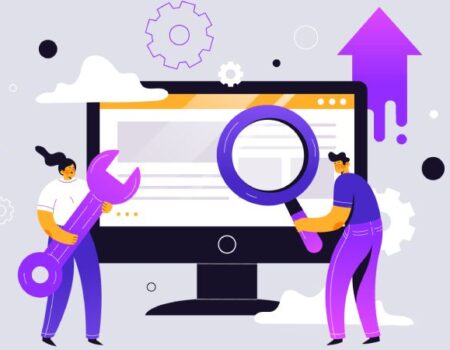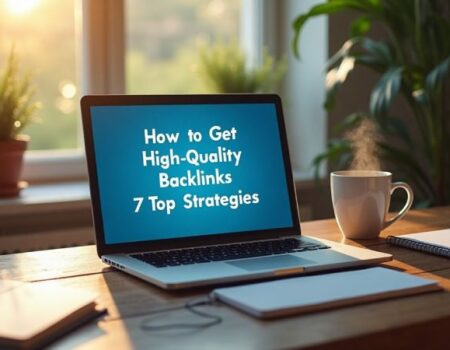SEO Web Design: Strategies to Optimize Your Website for Better Rankings
Creating an SEO-friendly website is essential for attracting visitors, conveying your message, and encouraging them to take action. After auditing and optimizing over 100 websites, we’ve identified the key design elements that contribute to a successful site. While having a visually appealing site is important for engaging prospects, ensuring it’s also optimized for search engines is what truly expands your reach.
With this in mind, we’re sharing valuable tips and insights to help you understand how to integrate SEO principles into your website design effectively.
What Does SEO Web Design Mean?
SEO web design focuses on building and structuring websites using techniques that improve their rankings on search engines like Google and Bing.
While keyword optimization plays a central role in SEO strategies, it’s equally indispensable to incorporate SEO principles into design, development, and content creation.
This comprehensive approach to SEO ensures your website is not only user-friendly but also conversion-driven and optimized for better search engine visibility.
At a high level, you’ll need to address a combination of written, visual, and technical factors, including:
- Site structure and navigation
- Mobile-friendly design
- Site speed optimization
- Content and copy optimization
- User experience (UX) and SEO
We’ll delve deeper into these elements shortly, explaining how they align with SEO web development and providing actionable tips to enhance each aspect.
But first, let’s clarify why integrating SEO into your web design process is vital for standing out in today’s competitive business landscape.
Why Is SEO Crucial for Web Design and Development?
First, we always emphasize that every business operates online to some extent. Although this has been true for years, the pandemic accelerated this reality as the world shifted almost entirely online.
Still not convinced?
Even if you run a brick-and-mortar business, potential clients are likely to Google your name or services before reaching out. A well-designed website establishes legitimacy, authority, and trustworthiness.
Personal recommendations remain powerful, but when someone is undecided, seeing that you have a professional online presence can sway their decision in your favor.
Of course, effective design and content go beyond mere credibility. However, one thing is certain — prospects must be able to find you online.
That’s where SEO website development comes into play. By optimizing your site for search engines, you unlock several advantages, such as:
- Higher Visibility and Traffic: In addition to being found by your name or business name, people can discover you by searching for the services you offer.
- Brand Credibility and Trust: Having a website already boosts your credibility. Ranking among the top results on Google thanks to SEO optimization further enhances your reputation.
- Higher Conversion Rates: When users actively search for your services, they’re often ready to buy or are further along in the customer journey.
- Cost-Effective Marketing: If your website isn’t designed with SEO or conversions in mind, search engines may struggle to surface your content, pushing you down in rankings.
“Additionally, if landing pages aren’t optimized for conversions, visitors may leave quickly.”
On multiple occasions, we’ve collaborated with SEO web designers and ad specialists to rewrite website copy as part of optimization projects.
We also know many ad agencies that have launched web design divisions to ensure they can deliver results for their clients. SEO web design is simply that critical.
SEO Web Design: How to Identify Issues Using Analytics and Key Metrics
For this blog post, we reached out to SEO consultants and web designers for actionable advice on leveraging analytics to identify web design issues that impact SEO.
If you notice the following in your analytics reports, it could indicate an underlying SEO web design problem.
1. Slow Largest Contentful Paint (LCP)
A critical metric to monitor is Largest Contentful Paint (LCP), which measures how quickly the main content on a page—such as a headline or image—loads,” explains Chris Burdick, Senior SEO Consultant and Strategist.
“If it exceeds 2.5 seconds, users may become frustrated and leave, negatively affecting your rankings. Common culprits include large, unoptimized images or excessive code slowing down the site.”
You can evaluate your Largest Contentful Paint by entering your URL into Google PageSpeed Insights.
2. Excessive Crawl Errors
If your website has recently undergone a redesign, this SEO web design issue might particularly affect you.
“When Google Search Console shows numerous crawl errors, such as 404s, 500s, or pages excluded from indexing, these are red flags signaling potential SEO problems,” notes Steve Yang, COO of
Channelwill. “Frequent causes include broken links, inaccurate redirects, poor site structure, and excessive crawl depth.”
Yang recommends using a site audit tool to identify and resolve broken links. We recommend Screaming Frog SEO Spider, which is free for up to 500 URLs. Additionally, ensure that 301 redirects are implemented correctly.
3. Low Scroll Depth
Blake Smith, founder and SEO consultant at Blake Smith Consulting, highlights that scroll depth can provide valuable insights into web design effectiveness.
“This metric reveals where users tend to drop off on a page, often pointing to design flaws that impact both engagement and search performance,” Smith explains. “For instance, we once identified a significant drop-off point where users mistook a stark background color shift for the page’s footer, causing them to stop scrolling prematurely.”
“To address this, we redesigned the section to create smoother, more gradual background transitions and added subtle visual cues, such as overlapping elements and directional arrows, to encourage continued exploration.”
The outcome? Scroll depth improved by 25%, and time on page increased significantly.
4. Slow Time to First Byte (TTFB)
“One often-overlooked metric that can reveal SEO-related design issues is Time to First Byte (TTFB),” says Nicholas Robb of Design Hero, a design agency for startups. “Many people focus on visual elements or content, but TTFB directly impacts how search engines and users perceive your website’s speed and quality.”
Robb advises looking beyond hosting and server configurations and examining how design choices might contribute to slower load times.
5. High Bounce Rate
“If you’re searching for one metric to uncover web design issues affecting your SEO, bounce rate is an excellent place to start,” says Paulo Andrade, SEO manager at SWOT Digital.
Andrade explains that “slow loading times, awkward navigation, or a poor mobile experience” are often the reasons visitors leave your site immediately without exploring further.
“To address this, begin by evaluating your site speed. Compress large images, minimize unnecessary scripts, and use tools like Google PageSpeed Insights to identify issues,” he suggests. “Next, ensure your site is mobile-friendly by testing it on various devices to confirm responsiveness and usability.”
“Clear, intuitive navigation is also essential; visitors should never feel lost. Finally, consider your content. Is it engaging? Easy to skim? If it fails to capture attention quickly, visitors may click away. By resolving these issues, you’ll retain visitors longer, improve SEO, and deliver a smoother, more enjoyable experience for everyone.”
Optimizing Web Design Elements for Enhanced SEO Performance
After using analytics to identify potential SEO web design issues, what specific design elements should you focus on optimizing?
Here are some key areas to prioritize to ensure your site not only looks visually appealing but also ranks higher in search results.
1. Site Structure and Navigation
Organizing your content into a clear, logical hierarchy with well-defined categories, subcategories, and pages makes it easier for search engines to locate what your audience is searching for.
From a technical SEO perspective, implementing breadcrumb navigation can help both users and bots navigate your site more effectively.
2. URL Structure
Long, complex URLs create challenges for both humans and search engine bots. Instead, aim for descriptive, keyword-rich URLs that are concise and easy to understand. Choosing a consistent structure across your site sets the stage for optimal performance.
For example, the above URL includes unnecessary “little” words, creating clutter that search engines must sift through.
Similarly, we recommend using /about instead of /about-us and /contact instead of /contact-us to maintain a clean and focused URL structure.
3. Mobile Optimization
SEO web design: StatCounter website showing 62.87% of searches are mobile
According to StatCounter, over 60% of global searches occur on mobile devices. For certain industries, this percentage is even higher. Anecdotally, we’ve noticed that B2C clients tend to have more mobile traffic compared to B2B clients.
Regardless, responsive design—where your site adapts seamlessly to various screen sizes and devices—is non-negotiable. If your audience struggles to use your site on mobile, all other SEO efforts may go to waste.
In fact, after reviewing your Google Analytics data, consider designing your site for mobile FIRST, then adapting it for desktop.
4. Page Load Speed
You can gauge whether your site loads quickly simply by using it yourself. To validate your observations, use a page speed testing tool like GTmetrix, which is one of our favorites due to its user-friendly interface.
5. Content Optimization
Our preferred content SEO strategy involves focusing on topics we find engaging and addressing common questions we encounter. Then, we identify relevant keywords and naturally incorporate them into titles, headers, meta descriptions, and key sections of the content.
Partner with our Digital Marketing Agency
Ask Engage Coders to create a comprehensive and inclusive digital marketing plan that takes your business to new heights.
SEO Web Design Should Remain a Top Priority
Optimizing your website for SEO might appear to be as simple as following a checklist like the one we’ve provided here. However, based on our experience, it’s not merely about ticking off items on a list. Since creativity plays a significant role, there’s far more nuance involved.
So, what’s the best approach? Prioritize your audience above all else. Focus on understanding their needs, preferences, and feedback, then blend that insight with the best practices we’ve outlined here. This ensures your site is not only visually appealing but also functional and SEO-friendly.
The key takeaway? Recognize that this isn’t a one-time task. As your website grows and evolves, so should your SEO strategy.









